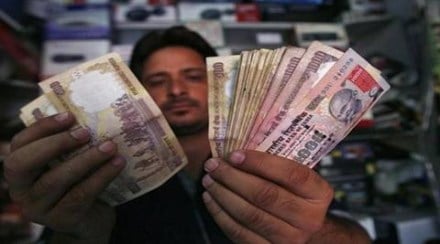Over a month has passed since the shock announcement of demonetisation, giving enough time to assess the impacts. The avowed initial goal of the policy was to flush out illegal holdings of cash—representing accumulations that had evaded taxes in legal activities, or were being used for illegal activities. A second policy goal that surfaced, perhaps as an afterthought, was the idea that demonetisation would spur a switch to digital transactions.
It was never the case that demonetisation was going to uncover vast hoards of black money. The really large amounts that have escaped taxation do not rely on cash transactions or on cash-holdings. These assets sit as digital records in foreign bank accounts, or perhaps as physical assets domestically. Perhaps criminals, domestic terrorists, politicians or various wheelers and dealers use unaccounted-for cash, and they would have had to deal with the consequences of demonetisation. But the level of cash deposited suggests that they were able to launder their money, perhaps at some cost, but without losing the value of their holdings and without being detected. Without being able to quantify burdens precisely, it is a reasonable conjecture that the less-well-off, the honest who happened to hold precautionary cash balances, and others who simply relied on cash legally—that is, the great majority of Indians—have borne the brunt of the one-time costs of demonetisation. Aside from the direct costs of standing in line and searching for ways to deal with the need to spend, exchange or deposit the notes being devalued, it is also a reasonable conjecture that there has been a substantial economic cost in terms of disrupted economic activity.
The other problem with the idea that demonetisation would destroy black money is that this is a one-time effect. An economic system that is unable to track transactions for purposes of taxation will never be able contain black money. One would have to use demonetisation periodically and regularly (but unexpectedly) to deal with the inevitable accumulations of black money—clearly an unsustainable economic system. This is where digitisation comes in. For businesses, the introduction of the Goods and Services Tax backed by a digital information system, will provide sustainable incentives against tax evasion. Large transactions, such as for property, invite tax evasion partly because transfer taxes are relatively high. Dealing with tax evasion requires effective auditing and enforcement by the tax authorities. Demonetisation does nothing to build the institutions and information systems needed for reducing tax evasion.
Of course, replacing cash with digital transactions through debit and credit cards creates the requisite tracking mechanisms for controlling tax evasion. Digital payments also reduce transaction costs. This is the basis for the supposed benefits that demonetisation will bring by spurring a switch away from cash. There are two problems with this narrative. First, digital payments require a robust, secure and widely accessible infrastructure. It is true that the demonetisation shock has forced some people to use digital payments for retail transactions where they did not before, but this is really a drop in the bucket. Creating the requisite infrastructure is a project that requires sustained effort and policy attention, not random shocks like demonetisation. The second problem is precisely that: spurring digital payments could have been done more efficiently than through incurring the costs of demonetisation. Finally, it has to be noted that another effect of the shock was an increase in the use of cryptocurrencies like Bitcoin—unless the government is prepared to deal with these, which are not perfectly anonymous but still hard to track, digitisation will have a downside as well.
Analysing the motives for demonetisation and its short-term impacts suggests that the government’s claims do not stand up well to scrutiny. The policy has not been well-justified, and its implementation has been extremely poor. There is no indication that the one-time costs of this implementation will be outweighed by longer-term benefits. The big fish have been relatively untroubled by the policy, and the burden has mostly fallen on those least able to deal with the disruption, the less-well-off. Was it just poor judgement that led to these developments? It is possible that there are other factors at work. One of the areas where unaccounted-for cash plays a role is in politics. If the ruling party was able to take actions based on its insider information, it might have gained an advantage over other political parties, something that could be valuable in the run up to state assembly elections in Uttar Pradesh. This would explain the timing of the demonetisation, and its poor overall implementation, as well as giving it a rationale. The rhetoric of digitisation and controlling corruption may be just window dressing for a policy designed to disadvantage political opponents at a crucial juncture. Of course, this is just speculation, and it could be that the real explanation is incompetence or misjudgement rather than Machiavellian motives. One will never know for sure what led to one of the most bizarre episodes in Indian economic policymaking.
The author is professor of economics, University of California, Santa Cruz
